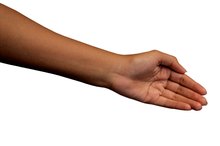What does fact checked mean?
At Healthfully, we strive to deliver objective content that is accurate and up-to-date. Our team periodically reviews articles in order to ensure content quality. The sources cited below consist of evidence from peer-reviewed journals, prominent medical organizations, academic associations, and government data.
- “International Journal of General Medicine"; Optimal Management of Carpal Tunnel Syndrome; Shimpei Ono et al.; 2010
- “International Journal of General Medicine"; Optimal Management of Carpal Tunnel Syndrome; Shimpei Ono et al.; 2010
The information contained on this site is for informational purposes only, and should not be used as a substitute for the advice of a professional health care provider. Please check with the appropriate physician regarding health questions and concerns. Although we strive to deliver accurate and up-to-date information, no guarantee to that effect is made.
Tingly Feeling When Doing Pull-Ups
Pull-ups are performed for strengthening your back and arm muscles. However, over-training or muscle-strength imbalances can result in the impingement of nerves and blood vessels, causing tingling and numbness. Treatment includes rest, stretches and surgery for severe cases. Consult your physician if symptoms worsen or persist.
If you are experiencing serious medical symptoms, seek emergency treatment immediately.
Pull-Ups
Pull-ups start in a hanging position off a bar. Your hands should be gripping the bar with your palms facing away from you. If your palms are facing you, it is called a chin-up not a pull-up. To pull yourself up, contract your arm and back muscles like your latissimus dorsi, bending your elbows and extending your shoulder until your chin is above the bar. Pull-ups use the resistance of your body weight to strengthen your arm and upper-back muscles.
- Pull-ups start in a hanging position off a bar.
- If your palms are facing you, it is called a chin-up not a pull-up.
Thoracic Outlet Syndrome
Arm Stretches on the Wall for the Median Nerve
Learn More
Thoracic outlet syndrome occurs when the nerves and blood vessels including the subclavian artery between your collarbone and first rib become compressed or impinged. Tight muscles like a tight trapezius muscle or repetitive movements from pull-ups may cause or aggravate thoracic outlet syndrome. When nerves or blood vessels are compressed, you may experience pain, muscle weakness and numbness or tingling, which can radiate from your neck all the way to your little finger. Risk factors include poor posture, muscle strength imbalances and tight muscles.
- Thoracic outlet syndrome occurs when the nerves and blood vessels including the subclavian artery between your collarbone and first rib become compressed or impinged.
- Tight muscles like a tight trapezius muscle or repetitive movements from pull-ups may cause or aggravate thoracic outlet syndrome.
Ulnar Nerve Entrapment
The ulnar nerve originates from under the collarbone and extends down to your hand. Although the ulnar nerve may become compressed anywhere in your arm, it is commonly hit or compressed at your elbow in the area called the “funny bone,” according to the American Academy of Orthopaedic Surgeons 1. Repetitive elbow flexion and gripping of the bar, for example, can inflame and compress your ulnar nerve at your elbow or hand, respectively. Symptoms include aching at your elbow and numbness and tingling down your arm and into your ring and little fingers.
- The ulnar nerve originates from under the collarbone and extends down to your hand.
- Although the ulnar nerve may become compressed anywhere in your arm, it is commonly hit or compressed at your elbow in the area called the “funny bone,” according to the American Academy of Orthopaedic Surgeons 1.
Other Causes
Stretches for the Ulnar Nerve
Learn More
Tight muscles can pinch the nerves and blood vessels that run through them, causing a temporary tingling sensation. Other conditions that may cause tingling in your shoulder, arm or hand include shoulder impingement syndrome, carpal tunnel syndrome and a herniated cervical disc. Shoulder impingement syndrome occurs when tendons and other structures are compressed below your collarbone -- called the subacromial space. The condition is aggravated with overhead movements like pull-ups. Carpal tunnel syndrome is compression of the median nerve in your wrist, which may be caused or aggravated by gripping the bar during pull-ups.
- Tight muscles can pinch the nerves and blood vessels that run through them, causing a temporary tingling sensation.
- Carpal tunnel syndrome is compression of the median nerve in your wrist, which may be caused or aggravated by gripping the bar during pull-ups.
Treatment and Prevention
Rest and avoid painful movements or positions. Take anti-inflammatory drugs like ibuprofen to reduce inflammation around nerves, muscles or joints. Your physician may recommend immobilization with a splint or sling, and physical therapy or surgery, depending on the type of injury and severity of your symptoms. To prevent additional tingling or injury and correct muscle-strength imbalances, stretch regularly, progress slowly with upper-body strength exercises and avoid slouching and poor posture.
- Rest and avoid painful movements or positions.
- To prevent additional tingling or injury and correct muscle-strength imbalances, stretch regularly, progress slowly with upper-body strength exercises and avoid slouching and poor posture.
Related Articles
References
- American Academy of Orthopaedic Surgeons; Ulnar Nerve Entrapment; October 2007
- “International Journal of General Medicine"; Optimal Management of Carpal Tunnel Syndrome; Shimpei Ono et al.; 2010
- “Hand Clinic Journal;” Conservative Treatment for Thoracic Outlet Syndrome; Carla A. Crosby et al.
- “Strength Training Anatomy;” Frederic Delavier; 2006
- Lleva JMC, Chang KV. Ulnar neuropathy. StatPearls. Updated June 4, 2019.
- Chauhan M, M Das J. Cubital tunnel syndrome. StatPearls. Updated December 11, 2018.
- Aleksenko D, Varacallo M. Guyon canal syndrome. StatPearls. Updated May 5, 2019.
- Shah CM, Calfee RP, Gelberman RH, Goldfarb CA. Outcomes of rigid night splinting and activity modification in the treatment of cubital tunnel syndrome. J Hand Surg Am. 2013;38(6):1125–1130.e1. doi:10.1016/j.jhsa.2013.02.039
- Bednar M, Light T, Bindra R. "Chapter 9. Hand Surgery" In: Current Diagnosis and Treatment in Orthopedics (5th edition). McGraw Hill Professional; 2013.
Writer Bio
Since 2007 Hannah Mich has written e-newsletters and been published in the "Missouri Journal of Health, Physical Education, Recreation and Dance." She has a Bachelor of Science in exercise science from Truman State University and a Master of Education in applied kinesiology from the University of Minnesota.








